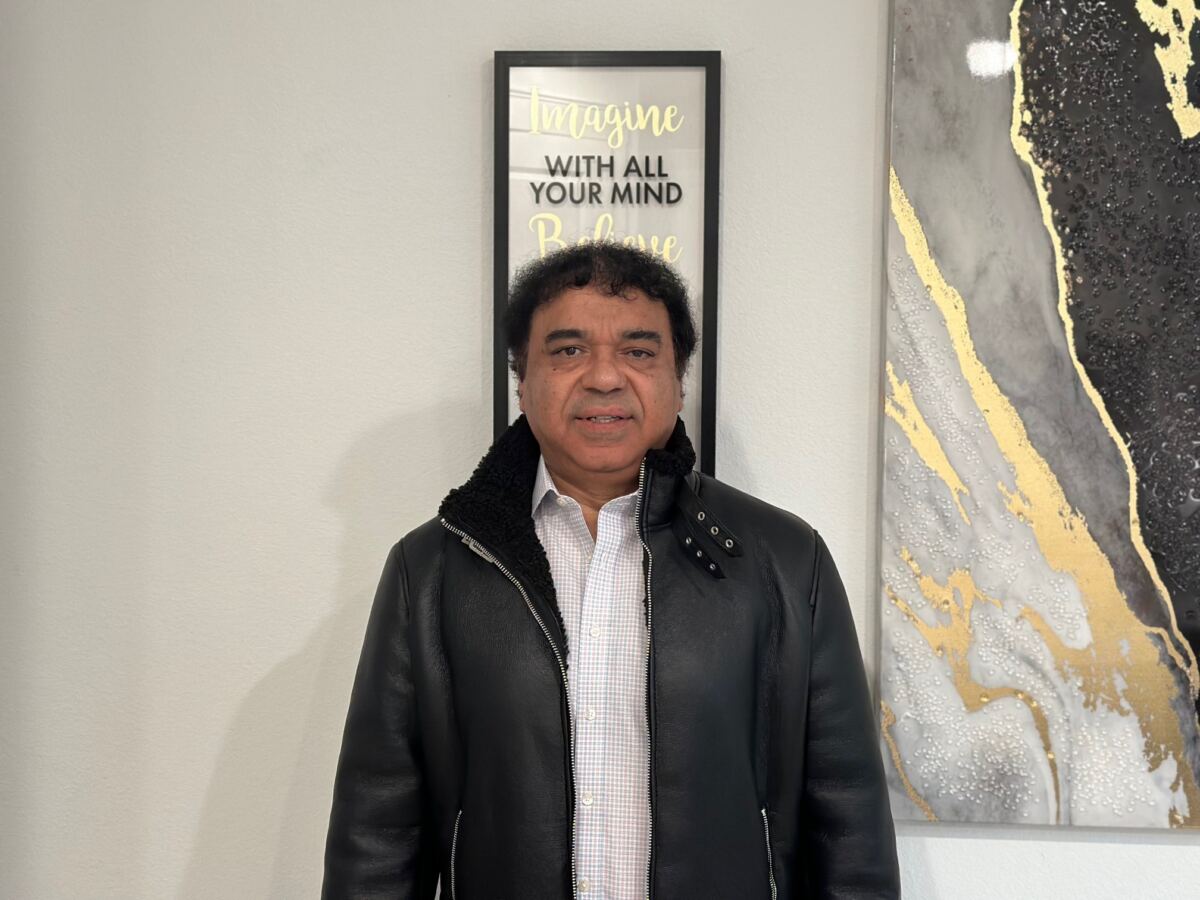Staying ahead of the competition is no small feat, particularly in the fast-changing world of cloud computing and AI. While most companies and individuals have made it their business to keep up with all the constant changes, Irshad Buchh, a cloud solutions engineer at Oracle, takes a different approach. For Irshad, it’s not just about keeping up but about leading the charge.
In this exclusive interview, we explore what sets Irshad Buchh apart in a competitive industry, his journey through the evolving tech landscape, and the passion that drives his daily pursuit of excellence.
Spencer Hulse: What skills or attributes have contributed to your success in the business world?
Irshad Buchh: My key strengths — curiosity, dedication, and extensive experience — are qualities anyone can cultivate. My journey in technology started after I graduated from University College London (UCL) several years ago. I started as a Java developer at that time, working in an era before the internet became ubiquitous and during the early days of Microsoft Windows-based PCs. It was an exciting time, mainly as I explored the Windows GUI and began working with the J2EE framework, Struts, and various Middleware Application Servers. At that time, all computing resources were located in company data centers, which was the standard for enterprise applications.
In 2006, Amazon Web Services (AWS) launched its public cloud services, starting with storage (S3) and compute (EC2) offerings. I was immediately intrigued and began using some of these AWS services. Over the years, AWS expanded its cloud services to include networking, security, and infrastructure automation. These advancements fascinated me because they significantly reduced software developers’ time to write and deploy enterprise applications.
In 2019, I joined AWS as a Solutions Architect (SA), a role that perfectly matched my growing interests. In this position, I had the opportunity to assist customers globally in designing cloud solutions using public cloud services. My role involved guiding companies in migrating applications from their data centers to the cloud to achieve cost savings and enhanced security. Essentially, I acted as an advisor, helping automate the deployment of customer applications to the cloud, thereby relieving their developers of considerable manual work.
Currently, I work as a Cloud Solutions Engineer at Oracle Corporation. Here, I continue to leverage my expertise by assisting global companies and enterprises in building large language models (LLMs) and Generative AI-based applications. This role combines my passion for programming with my deep interest in cloud architecture, allowing me to innovate and drive digital transformation for various organizations while achieving success in my career.
Spencer Hulse: How did you transform your passion into a successful business venture?
Irshad Buchh: My passion for innovation and problem-solving has been the cornerstone of my career, driving me to excel in cloud solutions and AI/ML. This passion not only fuels my personal satisfaction but also empowers me to create transformative solutions that address critical challenges faced by my clients.
A prime example of this was when I worked with a leading healthcare provider in the United States. The CTO shared a pressing issue: doctors were spending excessive time typing clinical notes during patient consultations, which detracted from the quality of their interactions with patients. Understanding the profound impact of enhancing doctor-patient relationships, I proposed and architected a cutting-edge solution utilizing Generative AI.
By leveraging Retrieval-Augmented Generation (RAG) technology, I developed a cloud-based application that allows doctors to focus more on their patients by automating the recording of consultations and generating precise clinical notes in real-time. The application integrates AI across three critical phases — patient interaction and recording, note generation, and review and finalization — resulting in a significant improvement in patient care for the healthcare provider.
This innovative approach not only showcases my ability to deliver impactful solutions but also underscores my commitment to using advanced technology to drive meaningful change in critical sectors like healthcare.
Spencer Hulse: What’s something in your industry you believe needs more attention?
Irshad Buchh: In the rapidly evolving landscape of cloud computing, security has become more critical than ever, especially with the growing reliance on container orchestration to manage cloud applications. Integrating security practices into the development lifecycle through DevSecOps is essential, as it ensures that security is embedded in every phase of application deployment, addressing vulnerabilities and safeguarding data more effectively. My experience as a Principal Solutions Architect at AWS has shown me the transformative impact of cloud technologies, and as cloud adoption has accelerated, I’ve focused on container security and DevSecOps to maintain robust security postures in cloud environments.
Containers have revolutionized application deployment with their scalability and agility, but they also introduce unique security challenges. My work involves addressing these challenges by integrating security practices early and continuously throughout the development lifecycle. DevSecOps allows us to weave security directly into the DevOps workflow, making it a core element of the development process rather than an afterthought. This proactive approach not only strengthens security but also enhances the overall efficiency and reliability of the software delivery pipeline. By equipping developers with the tools and knowledge to implement security best practices, we can build more secure and resilient cloud-based solutions, which will be crucial as we shape the system architectures of the future.
Spencer Hulse: What are your plans for your career?
Irshad Buchh: My career plans are deeply rooted in my commitment to advancing the field of AI/ML, particularly in my role at Oracle. I am fortunate to collaborate closely with NVIDIA, a leader in GPU technology, whose cutting-edge GPUs are vital to our Oracle Bare Metal Compute services. These services empower our customers and startups to train and build Large Language Models (LLMs) that are specifically designed to address industry-specific challenges in sectors such as healthcare, manufacturing, and fintech.
The use of NVIDIA’s A100 and H100 series GPUs in our compute services has been instrumental in driving the development of these highly specialized LLMs, allowing us to deliver innovative solutions that have a profound impact on critical industries.
The exponential growth in the AI/ML space is both inspiring and compelling, and I am passionate about contributing to this dynamic field. As AI/ML continues to evolve and reshape industries, I am committed to remaining at the forefront of these advancements, leveraging my expertise to drive meaningful progress and innovation.
Spencer Hulse: What advice do you offer your followers in the industry when they experience burnout?
Irshad Buchh: Burnout is a reality that many of us face, especially in high-pressure fields like AI and cloud computing. From my experience, the key to overcoming burnout is to reconnect with the passion that initially drove you into the industry. Take a step back and revisit the problems you’re truly excited to solve. Sometimes, it’s about shifting your focus to a new challenge or project that reignites that spark.
In my own journey, I’ve found that balancing innovation with self-care is crucial. It’s important to allow yourself time to recharge, whether through learning something new, mentoring others, or simply stepping away for a while. This not only helps in maintaining creativity and enthusiasm but also in sustaining the energy needed to lead and inspire others. Remember, our greatest contributions often come after we’ve given ourselves the space to refresh and refocus.
Spencer Hulse: What advice would you share with your younger self or with a mentee in your industry?
Irshad Buchh: I love this question because my son is just starting his college journey at UTD in Dallas, majoring in Computer Science, and he’s asked me this question multiple times. Based on my experience, here are the steps I believe undergraduate students should take to become solutions architects in the next few years.
To become a solutions architect, it’s essential to focus on the right courses during college. Prioritize learning programming languages like Python, Java, or JavaScript, as they’re widely used in the industry. Courses in data structures, algorithms, cloud computing, and AI/ML are also crucial for building a strong foundation.
Equally important is gaining practical experience through internships, which allow you to apply theoretical knowledge in real-world settings. Internships provide invaluable hands-on experience and can lead to full-time positions after graduation. Additionally, developing soft skills like communication, teamwork, and problem-solving is critical. Engaging with open-source communities can also help expand your network and expose you to a broader range of technologies and ideas.
By focusing on these areas — choosing the right courses, gaining practical experience, and developing soft skills — you’ll be well on your way to becoming a successful solutions architect.
Irshad Buchh stands at the forefront of AI innovation, significantly impacting the startup ecosystem and bolstering the United States’ position in the competitive global AI arena.








